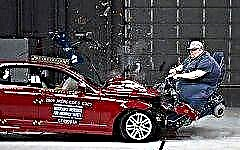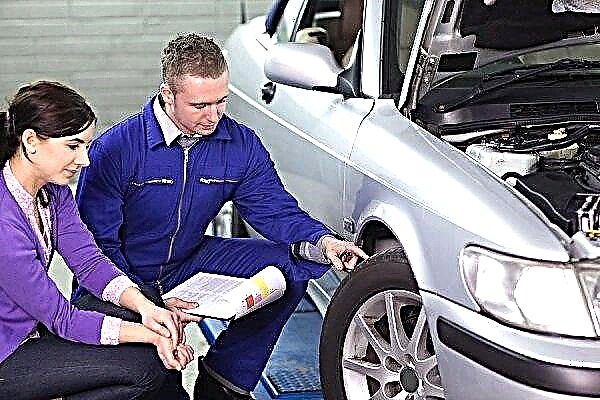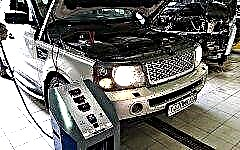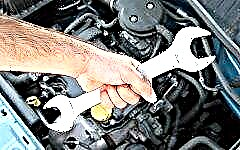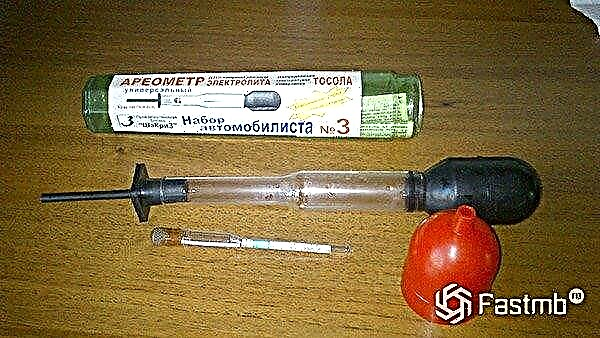You can't start a car without a battery. Let's talk about how to properly maintain and charge the battery, consider its structure.

The purpose of a battery in a car is known to every motorist, despite his experience. The main task of the battery is to start the engine and power the electronic system of the car when the engine is turned off. In injection engines, it is used to smooth the voltage that comes from the generator.
If your car is with an injection engine, then it is not necessary to remove the battery while the engine is working. This will usually result in a computer reset, or worse, a complete burnout.
Most cars use the same lead acid battery technology. The latest innovation is the use of sealed batteries. From their advantages, this is that it can work in any position, but it is forbidden to turn a regular battery over, since acid may leak out. On the downside of hermetic, this is the inability to check the density or fill it.
Battery structure

There are usually six sections inside the battery, each of which produces 2.1 volts. Each section has two lead plates, one negative and the other positive. The principle of operation is very, very simple, spongy lead is applied to the negative plate, lead dioxide is applied to the positive plate. An electrolyte, a mixture of water and sulfuric acid is poured into the battery. A chemical reaction creates a charge.
When the engine is running, do not open the cans on the battery.

To measure the density of the electrolyte, a special device is used - an automobile hydrometer, a glass flask with a rubber pear at the end (price from 80 to 250 rubles). The density indicators can be used to judge how charged the battery is. So 0.01 g / cm3 is about 6% of the battery charge, the initial normal density is from 1.25 to 1.27 g / cm3. When the density is 1.20g / cm3 in winter, the electrolyte will freeze at about -20C. It's not worth checking the battery density every day, but be sure to check it out from time to time.
How to charge the battery

When the car stops starting and the lights or radio does not turn on at all, this is the first indication that the battery should be charged. You can charge the battery both on the car and after removing it from the car. When charging on a car, do not start, as you can burn devices or fuses.
They are charged using a special charger, they can also be divided into two types, these are just chargers and charging and starting devices, which allow not only charging, but also starting the engine with a completely dead battery in a matter of seconds. In addition to chargers, it is worth remembering that the battery is also charged while driving, from the car's generator. The higher the engine speed and the fewer consumption devices are turned on, the faster the charging will take place.
It should be remembered that driving for short distances of a kilometer or two and often turning off and starting the car does not allow to charge the battery enough, often it only goes to discharge, according to statistics, starting the car is equivalent to ten kilometers of driving.
Consider the option of charging a conventional 12 volt battery using a charger. We connect the charger, plus the device to the positive terminal of the battery, minus, respectively, to the negative terminal, the main thing is not to mix things up, otherwise you can burn the electronic system and the battery. Nowadays, a battery costs a lot of money, about 2,400 rubles, or even more. When charging, it is advised to open the plugs of the sections so that the battery does not burst during the boiling of the electrolyte.
Regarding the current, it is recommended to set a tenth of the battery rating, for example, if you have 55 (ampere / hour rating), then you need to set it to 5.5A, but from personal practice it is better to set the twentieth of the rating, this is about two, three ampere, it's better to be on charge longer than recharge.
It is not necessary to bring it to a boil when charging, since after the fifth time the lead plates will definitely disappear. In the store, it is always advised to first fully charge and then completely discharge during the first use. You do not need to do this, the battery will lose 25% of its capacity, and this applies not only to car batteries, but also to those found on mobile phones, laptops and other devices. It is advised only so that after a while you come back and buy a new battery.
On average, you need to charge about eight hours, but watch out so that it does not boil. After charging, you should wipe the battery dry, inspect the terminals for the presence of oxide, if any, remove it urgently.
Charging is usually carried out in a dry room, never in a living room or kitchen.
Helpful hints when charging the battery:


